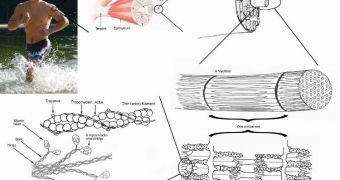A group of investigators recently used advanced DNA sequencing technologies to study the functions of muscle stem cells, and were able to discover several new aspects of how they work. The work was carried out on a number of children suffering from rare, progressive muscle diseases.
By selecting this population subgroup, investigators were able to observe a host of processes that cannot normally be studied, due to their rarity. By cross-referencing their data with control data from healthy subjects, experts were able to figure out how stem cells act as those conditions develop.
This investigation was co-directed by Charité Department of Neuropediatrics professor Markus Schuelke – who is also based at the NeuroCure Clinical Research Center – and University of Leeds Institute of Molecular Medicine professor Colin A. Johnson, in the United Kingdom.
Details of the study were published in a paper called “Mutations in MEGF10, a regulator of satellite cell myogenesis, cause early onset myopathy, areflexia, respiratory distress and dysphagia (EMARDD),” which is published in the November 20 issue of the top journal Nature Genetics.
The test subjects the team selected were suffering from diseases that weakened all the muscles in their body, and especially the diaphragm. Located right under the lungs, above the stomach, the diaphragm is critical to breath, and represents the largest muscle fulfilling this function in the entire body.
Since this muscle is progressively destroyed in degenerative muscle disorders, patients need to be confined to wheelchairs, and become entirely dependent on mechanical ventilation for their survival.
At the same time, patients cannot eat on their way. In healthy people, muscles in the esophagus transport food into the stomach through a series of reflex contractions. This mechanism fails in people such as those in the study group, who need to be fed via tubes.
Thanks to the new study, it may soon become possible to conduct accurate genetic testing and diagnosis of people who may be at risk for developing such extreme muscle conditions. The team learned that the MEGF10 gene plays a role in these disorders.
“These [DNA sequencing] methods enable us to sequence hundreds or even thousands of genes at the same time for an affordable price,” Schuelke and Johnson explain, as quoted by EurekAlert.
“This enables clinicians and researchers to discover novel genetic defects even in single patients. This is good news for families with unsolved rare genetic disorders. Many affected patients and their parents, who often have a 'diagnostic Odyssey' behind them, may now hope that the cause of their disease will be found in the near future,” they conclude.

 14 DAY TRIAL //
14 DAY TRIAL //